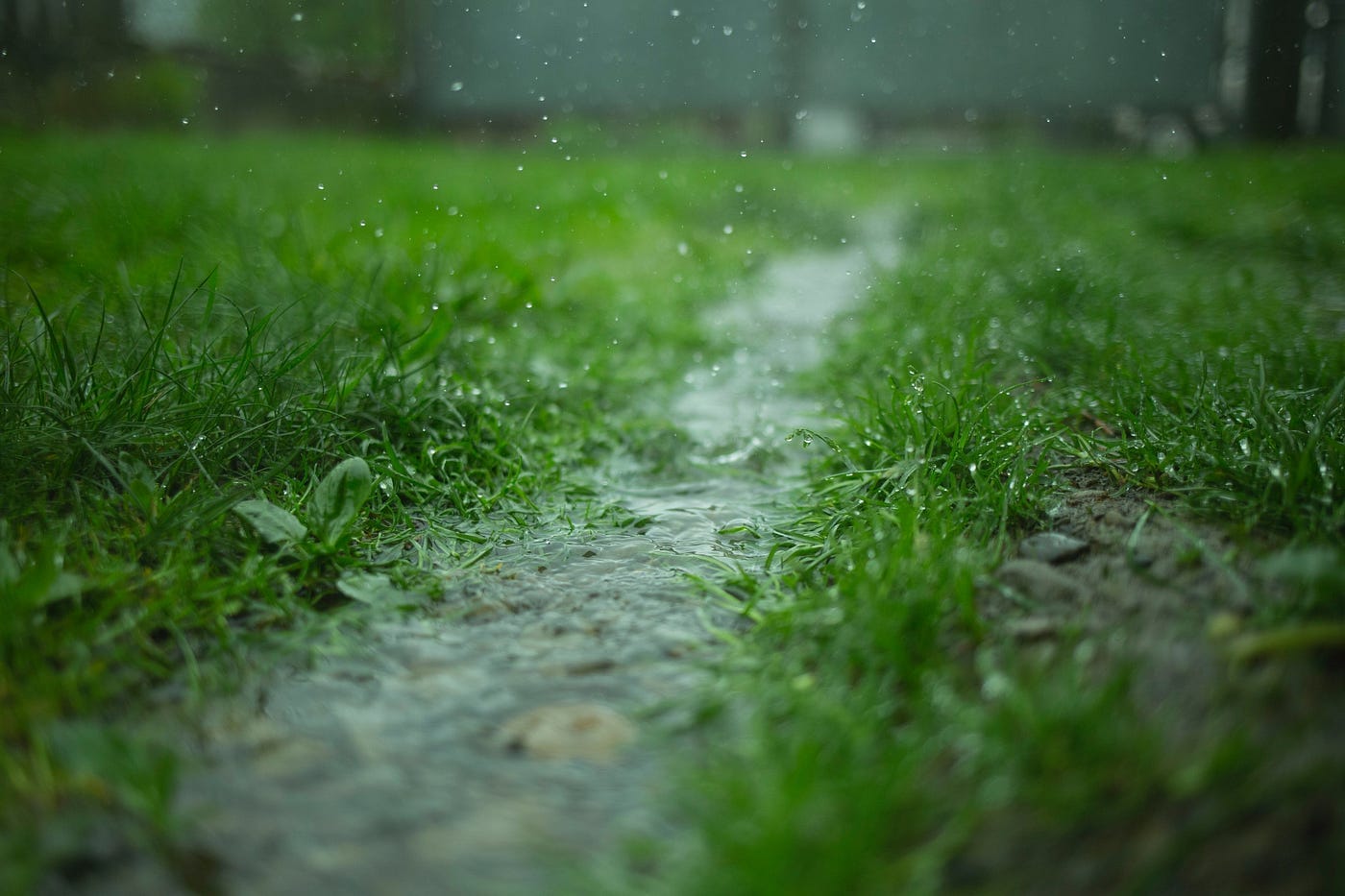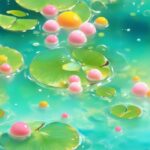Drizzle, drizzle, little drops, what’s your story? We’re going on an adventure to figure out the hows and whys behind this mysterious rain. Along the way, we’ll learn how drizzle forms, how it’s different from other types of rain, and why it’s important to our planet. Hold on tight, because we’re about to unlock the secrets of drizzly rain!
Drizzly Rain
We’ve all been there – that soft, misty rain that’s barely there but enough to make you grab a jacket. That, my friends, is the magic of drizzly rain.
Drizzly rain is like the quiet whisper of the rain world. Instead of heavy drops pounding the pavement, you get these teeny, tiny water droplets floating down like miniature parachutes. It’s the kind of rain that makes the world look a little blurry and everything feels just a touch damp. You know, the kind of day where you can’t decide if you need an umbrella or not.
This gentle rain likely happens when the air is full of moisture and the clouds are somewhat low. Think of it like this: the air is like a sponge, and when it gets too full, it just can’t hold all that water anymore. Drizzly rain is what happens when the sponge gently releases some of that extra moisture.
While it might not seem like much, drizzly rain actually plays a big role in our environment. Scientists suggest it acts as nature’s way of giving everything a gentle drink. Plants love it, the air feels cleaner, and it adds to the whole cycle of how water moves around our planet.
Scientists are still trying to fully understand all the complexities of drizzle, like why it happens in some places more than others. It’s a bit of a mystery, really. But one thing’s for sure: drizzly rain is a fascinating and essential part of the weather patterns we experience.
What is the Meaning of Drizzly Rain?
When we talk about drizzle, picture the shy cousin of a downpour. Instead of big, heavy drops, drizzle is all about those teeny-tiny water droplets that feel more like a fine mist. You know those days when the sky is all gray and gloomy, and it feels like the air itself is damp? That’s prime drizzle territory!
Now, you might be thinking, “Drizzle, mist, aren’t they the same?” Well, not quite. While both are made up of super-small water droplets, drizzle droplets are a tad bigger than mist. Mist is so fine it almost feels like you’re walking through a cloud, while drizzle is just substantial enough to make you grab a light jacket. And then, of course, there’s regular rain, which brings much larger drops and often a lot more of them.
What’s interesting about drizzle is that it usually signals a very humid atmosphere. It’s like the air is so full of moisture that it just can’t hold it all in anymore, and these tiny droplets start to fall. And sometimes, drizzle can be a sneak peek into what the weather has in store – it might be the calm before a storm, literally! It’s not uncommon for drizzle to eventually give way to heavier rain or even showers.
But don’t underestimate the importance of drizzle! It might seem insignificant compared to a heavy downpour, but it plays a crucial role in keeping things balanced. It helps to moisten the air and the ground, supplying much-needed water to plants and trees.
Here’s a quick rundown of what makes drizzle unique:
- Tiny Droplets: Drizzle involves water droplets that are less than 0.5 millimeters in diameter. That’s really, really small!
- Misty and Overcast: When it drizzles, expect a gray, overcast sky with a light and steady rainfall that doesn’t feel heavy or intense.
- Different from Mist and Rain: While they all involve water falling from the sky, drizzle, mist, and rain all have different droplet sizes, creating different intensities and experiences.
- A Sign of Humidity: Drizzle is often a good indicator that the atmosphere is very humid, and it might even precede heavier rainfall.
While we have a good understanding of what drizzle is and how it forms, weather patterns, especially on a smaller scale, are incredibly complex. Meteorologists are always learning more about the subtle factors that influence drizzle and other types of precipitation. So, the next time you find yourself walking through a light drizzle, take a moment to appreciate this gentle form of rain and the role it plays in our weather systems.
Is Drizzly a Word?
Yes, “drizzly” is indeed a real word! It’s the perfect adjective to describe a day when it’s, well, drizzling! Think of those times when the sky’s looking a bit gloomy and you’ve got a fine mist of water falling – not quite heavy enough to call it rain, but definitely more than just a sprinkle.
What exactly makes drizzle different from a regular shower? Drizzle is all about those tiny, almost microscopic water droplets. They’re so light that they seem to hang in the air, creating that characteristic hazy, damp feeling. It’s the kind of weather where you might not need a full-blown umbrella, but you’d probably appreciate a hood or a light jacket.
Interestingly, drizzle often hints at higher humidity levels in the air. This is because those tiny water droplets can easily stay suspended in humid conditions. And while some folks might find drizzle a tad bit gloomy, it’s actually quite important. Those fine droplets help to moisten the earth and nourish plants. Plus, drizzle can sometimes be a precursor to more substantial rainfall, signaling a shift in weather patterns.
What Does “Drizz” Mean?
“Drizz” essentially refers to that super-fine, almost misty rain that seems to hang in the air. It’s that type of rain that makes you feel like you’re walking through a cloud.
Basically, drizzle is like rain’s little sibling. It’s made up of teeny-tiny water droplets, so small that they don’t fall like regular raindrops. Instead, they sort of float down gently, almost like a whisper from the sky. You’ll often see drizzle when the air is already pretty full of moisture. Imagine the air is like a sponge that’s completely soaked. When it can’t hold any more water, the excess moisture condenses into these super-small droplets, and voilà, you’ve got drizzle!
Now, you might be wondering, “Is drizzle a good thing or a bad thing?” Well, it depends. For gardeners and farmers, a little drizzle can be a godsend, especially in drier climates. It’s like giving your plants a refreshing drink of water without drowning them. Plus, drizzle can actually help clean the air! It pulls out dust and other pollutants, leaving the air feeling fresher and cleaner.
But hold on, before you start doing a rain dance for drizzle, there’s a flip side too. While a little drizzle here and there is great, too much of it can lead to problems like waterlogging, where the ground gets so saturated that it can’t absorb any more water. And let’s be honest, being stuck in constant drizzle for days on end can put a real damper on outdoor plans.
Here’s a quick recap of what we’ve learned about drizzle:
| Feature | Description |
|---|---|
| Droplet Size | Extremely small, creating a misty appearance |
| Intensity | Light and gentle, less forceful than rain |
| Formation | Occurs when the air is saturated with moisture |
| Benefits | Provides moisture to plants, improves air quality |
| Drawbacks | Can lead to waterlogging and excessive humidity |
Scientists are always studying weather patterns like drizzle to better understand their impact on our environment. So, the next time you find yourself caught in a light drizzle, take a moment to appreciate this unique weather phenomenon and all its quirks!
How Do You Spell Drizzling Rain?
When we’re experiencing that super-fine, misty kind of rain that’s barely there, we call it “drizzling rain.” The drops are so tiny they almost seem to float before landing softly on you. It’s definitely not your heavy downpour kind of rain!
The cool thing about drizzle is that even though it’s technically rain, it often doesn’t even feel like you need an umbrella. The tiny droplets, usually smaller than half a millimeter across, just don’t have the same force as those big, fat raindrops. This type of rain is what we usually see when there’s a light shower, and it’s much less intense than a full-on rainstorm.
And here’s a little language lesson: when we describe the weather with this light rain, we say it’s “drizzly.” But when we’re talking about the precipitation itself, we call it “drizzle.”
Believe it or not, even this super-fine rain plays a big role in nature. Drizzle is actually really important for plants because it helps water them gently and thoroughly. Plus, it can actually help improve air quality by washing away dust and pollutants. And of course, it’s a key part of the water cycle, which keeps our planet alive and thriving.
So, next time you’re caught in a light drizzle, don’t despair! Just enjoy the refreshing mist and remember, it’s all part of nature’s amazing system.
What is Drizzly Rain?
Drizzly rain refers to those days when you’re not quite sure if you need an umbrella or not – the days with that misty, almost-rain feeling in the air.
Think of drizzle as the shy cousin of a downpour. It’s made up of these super tiny water droplets, much smaller than what you’d see in a regular rainstorm. These little droplets fall really slowly, kind of hanging in the air like a delicate curtain of moisture.
Now, you might be thinking, “Isn’t that just mist?” And it’s true, mist and drizzle can seem pretty similar. But here’s the thing: those tiny water droplets in drizzle? They’re actually a bit bigger than the ones in mist. Plus, drizzle falls a bit faster, even if it doesn’t feel like it’s coming down very hard. It’s like the difference between a light sprinkle and a thick fog.
So why does drizzle happen? Well, it’s often a sign that the air is packed with moisture – we’re talking high humidity levels. You’ll often see it in the spring and fall, those transitional seasons when the weather can’t quite make up its mind. And sometimes, drizzle can be a hint that a bigger rainstorm is on its way. But other times, it just sort of hangs out, creating that atmospheric, almost magical feeling in the air.
Scientists are still studying all the intricacies of how drizzle forms and what makes it different from other types of precipitation, so there’s always more to learn!
What Does “It’s Drizzly” Mean?
When someone says “It’s drizzly,” it means we’re experiencing that in-between weather – not quite a downpour, but definitely not sunny either. It’s like the weather can’t quite make up its mind!
“Drizzly” basically means a super fine, misty rain. You’re more likely to feel a light spray than see big, fat raindrops. Think of it like this: if rain is like taking a shower, drizzle is like walking through a light fog… with maybe a few stray water droplets hitting your face. It’s the kind of rain that makes everything look a bit hazy and leaves a sort of dampness in the air.
Why does it drizzle? Well, imagine the air gets so full of moisture that it’s practically bursting. That’s when tiny water droplets start to form. But these droplets are so small and light they take their sweet time falling to the ground. That’s drizzle for you! Unlike a heavy rain that might leave puddles everywhere, drizzle is more about creating a subtle, misty atmosphere.
Experts are still trying to fully understand how drizzle forms and what makes it different from regular rain. Some believe it has to do with specific types of clouds or even tiny particles in the air. It’s a bit of a weather mystery still being unraveled!
Things to Remember About Drizzle:
- Fine Droplets: Imagine the tiniest water droplets you can, that’s drizzle! They’re way smaller than raindrops.
- Gentle and Slow: Drizzle doesn’t fall hard and fast, it’s more of a gentle descent.
- Hazy Views: Drizzle often comes with reduced visibility, making things look a bit blurry in the distance.
- Moist, Not Soaked: While drizzle can make things damp, it doesn’t usually lead to big puddles like heavier rain.
So, the next time someone says, “It’s drizzly out there,” you’ll know exactly what they mean. It’s nature’s way of giving us a gentle sprinkle instead of a full-on soak!
What Does “Drizzy” Stand For?
While we’ve been discussing the weather phenomenon, “Drizzy” actually has nothing to do with rain. It’s a nickname that people use for the famous rapper, Drake.
Think about it – Drake’s from Canada, a country known for its chilly, drizzly weather. Plus, Drake’s music often has a kind of smooth, mellow vibe, kind of like a light drizzle.
It seems like the nickname just stuck! Fans and fellow artists started calling him “Drizzy,” and it became a thing. Now, it’s like a badge of honor for Drake and his fans.
There you have it! “Drizzy” is all about Drake, a nod to his Canadian roots and his signature musical style. It’s a fun, catchy nickname that has become synonymous with the rapper himself.
What’s Another Word for Drizzly?
There are quite a few synonyms we can use to describe that light, misty kind of rain that makes you want to curl up with a good book and a cup of tea!
You could say it’s sprinkling outside, which kind of sounds like someone is lightly dusting the world with water droplets. Or maybe it’s more of a misty rain, where the air itself feels damp and you can barely see through the haze.
Of course, sometimes “rainy” just covers it, even if it’s not a full-blown downpour. And then there’s always the option of simply saying “drizzling,” which is perfectly fine too!
Think of it like this: Imagine you’re outside and you feel those tiny little water droplets hitting your skin. Not enough to make you soaking wet but enough to make you grab a light jacket. That’s the essence of a drizzle.
Interestingly, drizzle is more common in some parts of the world than others. Some people love the cozy feeling it brings, while others find it a bit gloomy. Either way, it’s a natural phenomenon that reminds us of the power and beauty of the weather.
While we often think of drizzle as just a light rain, there’s actually a bit more to it. Scientists are still studying exactly how drizzle forms, but it seems like it has something to do with tiny cloud droplets colliding and merging together. These droplets are so small and light that they just kind of float down to the ground instead of falling like bigger raindrops.
So, the next time you find yourself looking out the window at a misty, slightly wet day, remember that there’s a whole world of words to describe it! And who knows, maybe you’ll even impress your friends with your newfound knowledge of drizzle.
What is the Meaning of Frosty Rain?
Imagine rain falling from the sky, but the air near the ground is freezing cold. So, as these raindrops plunge down from the warmer air above, they suddenly hit this icy blast. Instead of staying liquid, the outer layer of each raindrop instantly turns to a super-thin shell of ice. That’s frosty rain! It’s like the rain is trying to be snow but didn’t quite make it.
This phenomenon usually happens when there’s a bit of a weather sandwich going on. You might have a warm layer of air hanging out above the ground, and then a layer of cold air gets trapped underneath it.
Think of it like this: the raindrops are taking a quick dip in a warm bath as they fall, but then they get hit by a blast of freezing air right before they land. The result? Frosty rain – those weird, half-frozen raindrops that can make everything slippery and kind of magical at the same time.
What is the Meaning of Dripping Rain?
Dripping rain is essentially another way to describe the gentle and mesmerizing phenomenon of drizzle. Unlike a heavy downpour, drizzle is characterized by those tiny, almost invisible water droplets that seem to hang in the air, creating a misty and ethereal atmosphere.
You see, when those fluffy white clouds get overloaded with moisture, they need to release some of that pent-up energy. Sometimes, this results in a dramatic downpour, but other times, the clouds opt for a more subtle approach: drizzle.
Picture this: warm, moist air rising from the ground collides with a layer of chilly air above. As this warm air cools, it loses its ability to hold onto all that water vapor. The excess moisture then condenses, clinging to tiny dust particles in the air and forming minute water droplets. And voila – drizzle is born!
Drizzle is often a telltale sign of damp, dreary weather. It’s frequently accompanied by overcast skies, shrouding the world in a misty haze that can make it tough to see clearly. And if you’re planning on venturing out in a drizzle, be prepared for slippery roads and sidewalks – those tiny droplets can make for some surprisingly slick surfaces.
While drizzle itself isn’t usually a cause for concern, it can sometimes hint at the arrival of something a bit more intense. For instance, a light drizzle might be the opening act for a full-blown thunderstorm. So, next time you encounter a drizzle, remember – it’s always best to stay weather-aware and keep an eye on the sky.
Whether you’re looking to learn more about the definition of torrential rain or discover rainstorm facts, we’ve got you covered!
- Discover the Borough of Frenchtown, NJ: A Delaware River Town Blending History, Art & Nature - November 22, 2024
- Discover Clarks Grove, MN: A Small Town with a Big Heart - November 22, 2024
- Califon Borough, NJ: A Small Town with a Big Heart (and Rich History) - November 22, 2024













